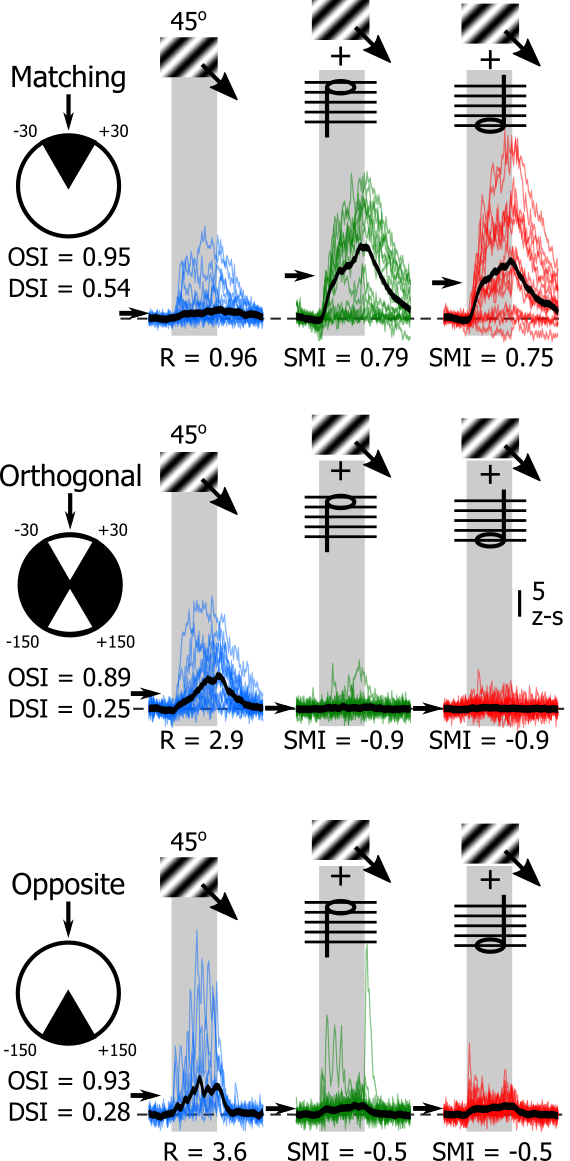Sounds improve the encoding of visual information
McClure J.P., and Polack P-O. (2019) Pure tones modulate the representation of orientation and direction in the primary visual cortex. Journal of Neurophysiology. 121(6): 2202-2214
In this article, we show that, in the presence of sounds, the neuronal population recruited by an oriented visual stimulus in the primary visual cortex (a.k.a. representation of the visual stimulus in V1) is better tuned to the visual stimulus that the population recruited when the same visual stimulus is presented in the unimodal condition. This better representation in the audiovisual context is due to a better recruitment of the neurons tuned for the orientation of the visual stimulus (signal) and a suppression of the response of neurons tuned for orientation orthogonal and opposite to that of the visual stimulus (noise).
Figure
Caption
Responses of a neuron whose preferred orientation matched the orientation of the visual stimulus (top), a neuron whose preferred orientation matched an orientation orthogonal to that of the visual stimulus (middle), and a neuron whose preferred orientation matched an orientation opposite to that of the visual stimulus (bottom), in the absence (blue traces) or in the presence of one of two tones (5 kHz, red; 10 kHz, green). OSI: Orientation selectivity index; DSI: Direction selectivity index; R: unimodal response amplitude in z-score of baseline activity; SMI: sound modulation index



